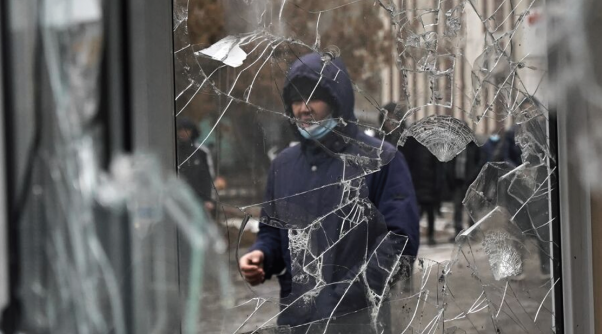Pogroms in Post-Nazarbayev Kazakhstan
This report is published as part of the project “Nationalism and Violence in Central Asia” funded by the United States Institute of Peace.
Since the collapse of the Soviet Union, Kazakhstan has branded itself as a model for interethnic peace and harmony. In official discourse, especially Russian language material, the country’s leadership has maintained the importance of multiculturalism and ethnic diversity as cornerstones of a new Kazakhstani nation. Kazakhstan has created several institutions to ensure representation of ethnic minorities in politics, such as the Assembly of the People of Kazakhstan and the World Congress of Leaders of the World and Traditional Religions. It has also introduced several doctrines and national programs to create a sense of unity among the people and to provide a common vision for living together, such as the Doctrine of National Unity, Mangilik El: One Country, One People.
The policy of the ‘friendship of peoples’ was a cornerstone for Nazarbayev’s regime who showcased social stability in the country in various multilateral fora as being a result of deliberate government efforts. However, the official picture of public diversity and unity has been frequently tarnished due to recurrent cases of intercommunal violence between ethnic minorities and the titular majority.
In February 2020, a simple brawl between private individuals snowballed into mass violence between ethnic Dungans and Kazakhs that left 11 people dead, 192 injured (including 19 police officers), and the mass exodus of some 24,000 Dungan fleeing into neighboring Kyrgyzstan. The violence occurred in the four Dungan-majority villages of Masanchi, Sortobe, Bular Batyr, and Aukhatty. About 5000 ethnic-Kazakh marauders were mobilized to the villages after news had spread that a Dungan man had broken an old Kazakh man’s leg during a driving incident and tried to evade arrest. The resulting violence caused $4.5 million USD (1.7 billion Tenge) worth of damage, including the destruction of 168 homes and some 122 cars. The violence lasted for just 13 hours and was eventually put down by the National Guard.
Three years after the violence, this study aims to better understand the violence. First, although a lot has been written about the chronological development of the pogrom in local media, nobody has addressed the perceptions and motivations of the actors involved. By using the Korday pogroms in February 2020 as a case study, we map out the actions of major stakeholders in order to explain the process of intercommunal violence in post-Nazarbayev Kazakhstan. Second, we want to create a more dynamic explanation for the violence by outlining the progress of conflict through stakeholder mapping at the beginning of the pogrom, during the unrest, and then during the trial in order to illustrate the repositioning of various actors and the establishment of “alliances” and/or divisions. The comparison between these maps will allow us to discern gaps in the conflict resolution methods and produce a set of recommendations for addressing them.
Assel Tutumlu is an Associate Professor in Political Science at Near East University, Northern Cyprus. Her research explores the nature of authoritarian regimes in Central Asia and beyond, particularly looking into the discursive and disciplinary practices. She appeared on Al-Jazeera, BBC, TRTWorld, and France24. Her work was published in Europe-Asia Studies, Central Asian Survey, Security Journal, Journal of Eurasian Studies, Problems of Post-Communism.
Zulfiya Imyarova is Associate Professor at the School of Governance and Law, Narxoz University, Kazakhstan. Her research interests cover ethnic and language politics and nation-building processes in Central Asia.

